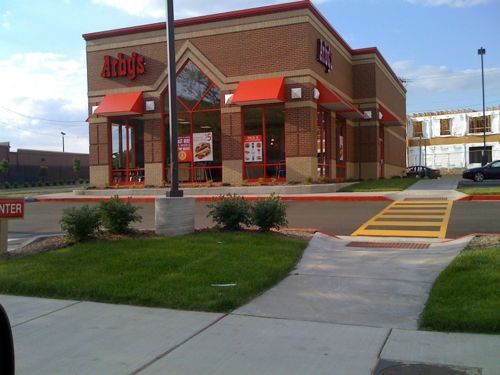New Arby’s has Required ADA Access Route
For a couple of years now I’ve showed project after project lacking a federally mandated ADA-compliant access route. The biggest culprits are often fast food joints with drive-throughs taking priority over the pedestrian (see post on recent Starbuck’s locations). Shopping centers are no exception and it wasn’t until I began highlighting the flaws at Loughborough Commons did they make changes to the original access plans. To date there is still not proper access to the Lowe’s. Granted a person in a wheelchair doesn’t come off the street to take home drywall but smaller items like light bulbs are still in need when you are disable.
I think the city’s former commissioner on the disabled used to just count the number of disabled parking spaces and give projects an OK if it met the required number. But I can assure you that not everyone arrives by car which means if they are not bicycling they are walking or using a wheelchair. And the ADA access route provides equally good access for those who are able bodied and those that are not. Those who are out pushing a baby stroller will appreciate the provisions as much as the person in a wheelchair.
So when the Arby’s on Lindell was rebuilt following the fire at the construction project next door (see post) I was not optimistic about what sort of pedestrian access they would provide. However, I was pleasantly surprised when I saw the final outcome:
 As you can see above it doesn’t take much — just a way to get from the public sidewalk to the main accessible entrance. Clearly here the pedestrian was given due consideration.
As you can see above it doesn’t take much — just a way to get from the public sidewalk to the main accessible entrance. Clearly here the pedestrian was given due consideration.
Given the urbanity of the apartment project next door it would have been nice to see the Arby’s be less suburban in nature — closer to the street, fewer auto drives, etc but at least they got the pedestrian access right. So if we are going to continue to build more suburban structures in the city, such as this Arby’s, we need to ensure they all have pedestrian access to the public sidewalk as this does. Anything less is unacceptable.
